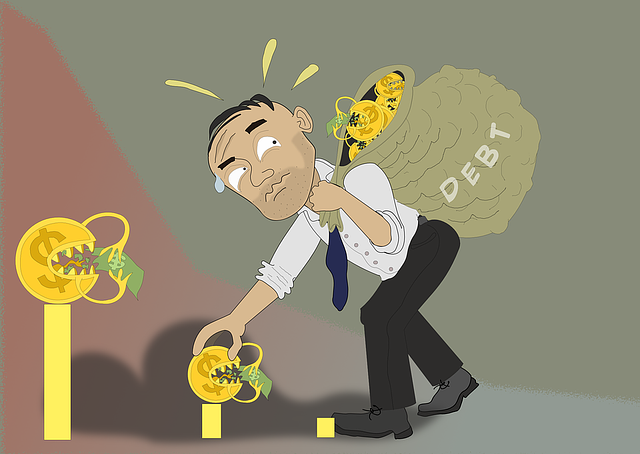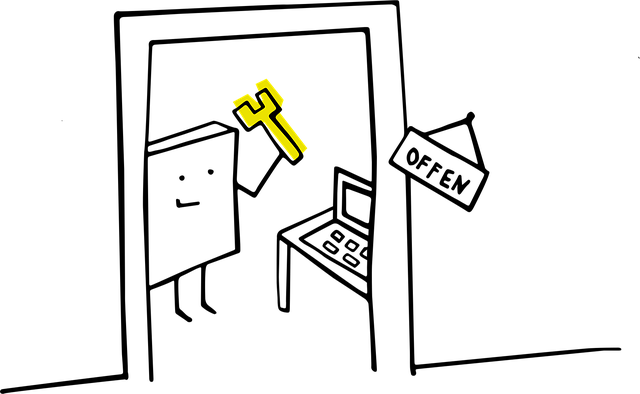Personal debt consolidation loans merge multiple high-interest credit card debts into a single loan with a lower interest rate, simplifying payments and reducing stress. Unlike debt settlement, consolidation ensures full repayment over time with flexible terms based on individual financial capabilities. Understanding different loan types and aligning them with goals is crucial. For those with bad credit, specialized lenders offer tailored loans. Successful borrowing requires responsible practices for improved long-term financial health. After consolidation, develop a strategic repayment plan, maintain a realistic budget, and consider debt management programs to ensure financial stability.
Overcoming credit card debt can feel overwhelming, but effective consolidation methods offer a clear path to financial freedom. This comprehensive guide delves into the world of personal debt consolidation loans, revealing how these strategic financing tools can simplify repayment and reduce interest rates. From understanding consolidation fundamentals to choosing the right loan type and maintaining stability post-consolidation, we provide step-by-step strategies for achieving lasting debt relief.
- Understanding Credit Card Debt Consolidation
- Benefits of Personal Debt Consolidation Loans
- Choosing the Right Loan Type for You
- Step-by-Step Guide to Consolidation Process
- Strategies to Repay Consolidated Debt Efficiently
- Maintaining Financial Stability After Consolidation
Understanding Credit Card Debt Consolidation

Credit card debt consolidation is a strategic approach to managing and paying off high-interest credit card debts. It involves combining multiple credit card balances into a single loan with a potentially lower interest rate, making it easier to manage and reducing the overall cost of repayment. This method allows you to simplify your financial obligations by consolidating your debts into one manageable payment, which can significantly ease the stress associated with multiple due dates and varying interest rates.
Personal debt consolidation loans are a popular choice for many individuals seeking to overcome credit card debt. These loans enable borrowers to repay their credit cards in full while enjoying lower monthly payments, which makes it easier to stick to a repayment plan. Additionally, reputable lenders often offer flexible terms and conditions, allowing you to choose a loan duration that aligns with your financial capabilities. Compared to debt settlement, which involves negotiating with creditors to reduce the amount owed, consolidation provides a more structured approach to debt management, ensuring you pay off the borrowed sum in full over time.
Benefits of Personal Debt Consolidation Loans

Personal debt consolidation loans offer a strategic approach to managing and repaying multiple debts simultaneously, providing several significant advantages for individuals burdened by high-interest rates and a maze of repayment terms. By consolidating various debts into a single loan with a lower interest rate, borrowers can simplify their financial obligations, making it easier to stay on track with repayments. This not only reduces the stress associated with juggling multiple bills but also allows them to reclaim control over their finances.
One of the key benefits is the potential for substantial savings on interest payments. Consolidation loans often come with fixed rates, preventing the fluctuation and additional costs associated with variable-rate debts. Additionally, these loans can be tailored to fit individual needs, including options for consolidating credit card debt, medical bills, or even student loans. This versatility enables individuals to participate in effective debt management programs, ultimately leading to financial stability and a clearer path towards achieving long-term financial goals.
Choosing the Right Loan Type for You

When considering personal debt consolidation loans, it’s crucial to understand that different loan types cater to various financial needs and circumstances. The first step is to assess your current financial situation and determine which consolidation option aligns best with your goals. For individuals struggling with bad credit, specialized lenders offer personal debt consolidation loans tailored to help overcome this hurdle. These loans often come with flexible terms and, despite the credit challenges, can provide a viable path to debt relief.
Finding a personalized solution involves researching lenders who cater to debt consolidation loans for bad credit. Compare interest rates, loan amounts, and repayment terms to find the best fit. It’s essential to remember that while these loans can be beneficial, they require responsible borrowing practices to ensure successful debt management and improve your financial health in the long term.
Step-by-Step Guide to Consolidation Process

Overcoming credit card debt through personal debt consolidation loans can be a strategic move towards long-term debt freedom. Here’s a step-by-step guide to help navigate this process effectively:
1. Assess your financial situation: Begin by evaluating your current debts, interest rates, and repayment terms. This step is crucial as it allows you to understand the extent of your debt and tailor your consolidation strategy accordingly.
2. Explore bad credit financing options: Despite having bad credit, there are various personal debt consolidation loans available. Research institutions offering loans designed for individuals with lower credit scores. These options can provide a fresh start and help consolidate debts into a single, manageable repayment.
3. Compare interest rates and terms: Shop around to find the best rates and terms for your personal debt consolidation loan. Lower interest rates will significantly reduce the overall cost of debt repayment. Ensure you understand the repayment period and any associated fees or penalties.
4. Choose a consolidation method: Decide whether to consolidate all debts into one loan or keep some separate. A single loan simplifies repayments, but keeping multiple loans might offer better terms for certain debts.
5. Apply for the loan: Gather required documents and apply for the chosen personal debt consolidation loan. Be transparent about your financial situation to increase your chances of approval.
6. Repay your debts: Once approved, use the loan proceeds to pay off your existing debts. Set up a budget to manage repayments and stay on track for long-term debt freedom.
Strategies to Repay Consolidated Debt Efficiently

After consolidating your credit card debt through personal debt consolidation loans, the next crucial step is to devise a strategy for efficient repayment. A well-planned approach ensures that you not only eliminate your debt but also improve your financial health in the long term. Start by creating a detailed budget that allocates your income towards the consolidated loan repayments, ensuring minimal disruption to your daily expenses. Prioritize making more than the minimum payments required, as this reduces the interest accrued and accelerates debt payoff.
Consider seeking tailored financial advice from experts who can offer guidance on managing your debt effectively. They might suggest strategies like the debt snowball or avalanche method, which focus on paying off debts in a structured manner, helping you gain control over your finances. Remember, while government-assisted debt consolidation programs can be beneficial, understanding the differences between debt settlement and consolidation is vital to making informed decisions about your financial future.
Maintaining Financial Stability After Consolidation

After successfully consolidating your credit card debt through personal debt consolidation loans, maintaining financial stability is crucial. This involves creating and adhering to a realistic budget that accounts for your consolidated loan payments alongside other essential expenses. It’s important to note that while consolidation offers relief from multiple high-interest payments, it doesn’t eliminate the need for responsible financial management.
One effective strategy is enrolling in debt management programs that provide guidance on budgeting and debt restructuring strategies. These programs can help you better understand your spending habits and make adjustments to ensure timely repayment of your consolidated loan. Additionally, maintaining a good credit score becomes even more critical as it can determine future loan rates and terms. Responsible financial behavior, such as making payments on time and keeping balances low, will contribute to a positive credit history, enhancing your financial stability in the long run.
Credit card debt consolidation is a powerful tool to gain control over your finances. By understanding the process and choosing the right loan type, you can simplify repayment and reduce interest rates. Following a step-by-step guide and adopting efficient strategies will help you repay consolidated debt swiftly. Moreover, maintaining financial stability post-consolidation ensures long-term benefits of personal debt consolidation loans, enabling you to focus on building a healthier financial future.
